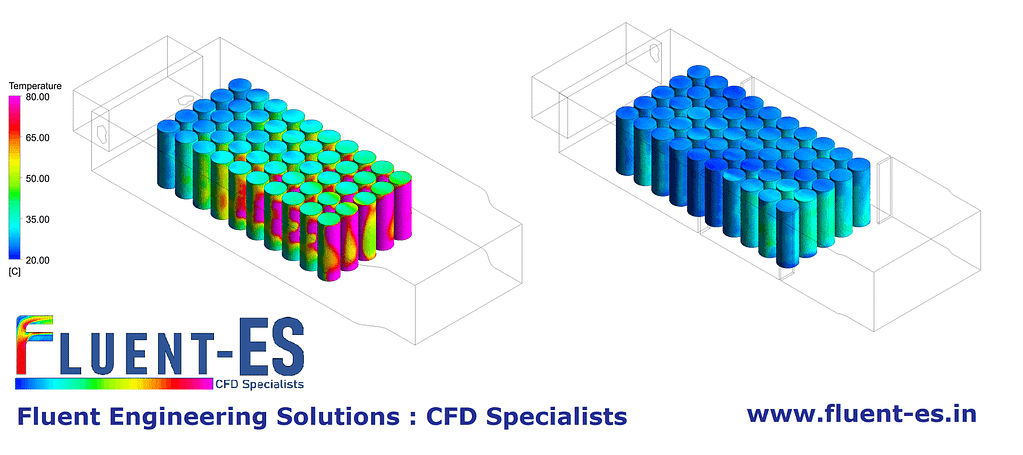Battery Cooling in EV
Looking at the current scenario to meet the expectations of the consumer, electric vehicles (EVs) must have performance and battery reliability comparable to that of a modern combustion engine vehicle.
One of the current limitations is in the thermal control of the battery, if the battery operates at low temperature it reduces the charged ion mobility and hence the power output due to slow down of electro-chemical reactions, while elevated temperature accelerates charge ion mobility which can lead to corrosion and reduce the overall battery life.



The typical rectangular battery cooling system is as shown, the cooling air is move away from the cell arrangement and refuse to flow through small channel available between battery cells. This is due to improper utilisation of available space. The huge opening on the side the rectangular shape allows to bypass cooling air quickly with lowest resistance. Hence heat from the cells is not efficiently convicted which results into formation of hot spot over battery surfaces.
The optimal spacing and providing reasonable resistance by means of vertical plate in flow path, allowing more channels in the battery cells space. Overall, a cooling effect is efficiently increase by means of temperature uniformity but power consumption (in terms of the pressure drop) are defined by CFD analysis.
Contact us for your optimal battery cooling performance.
